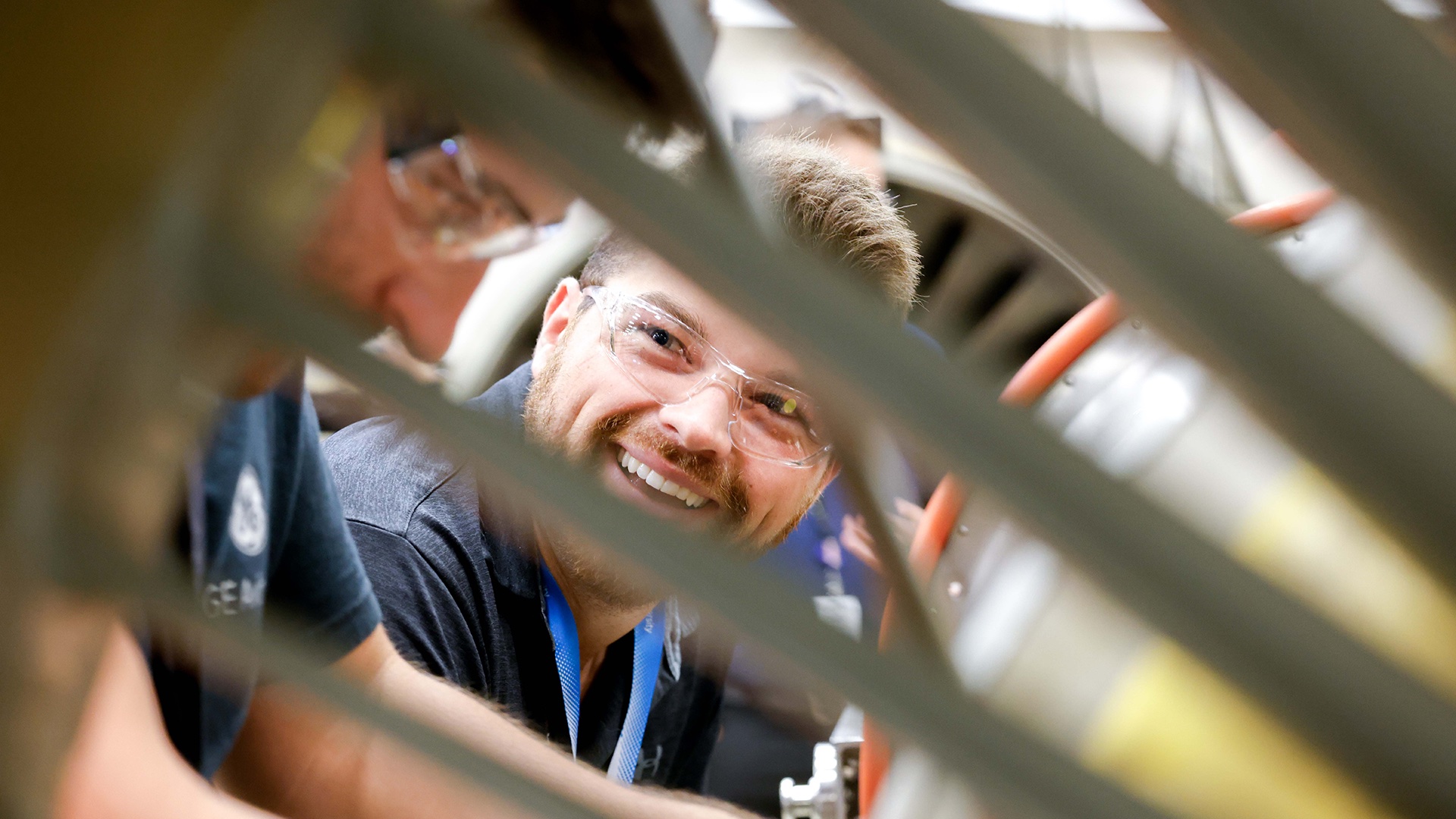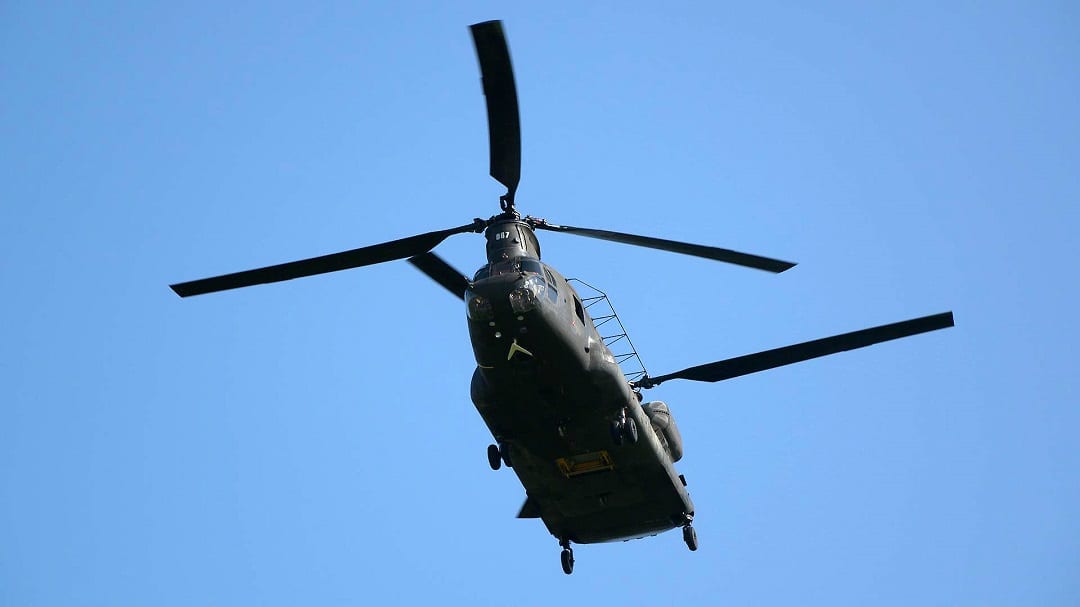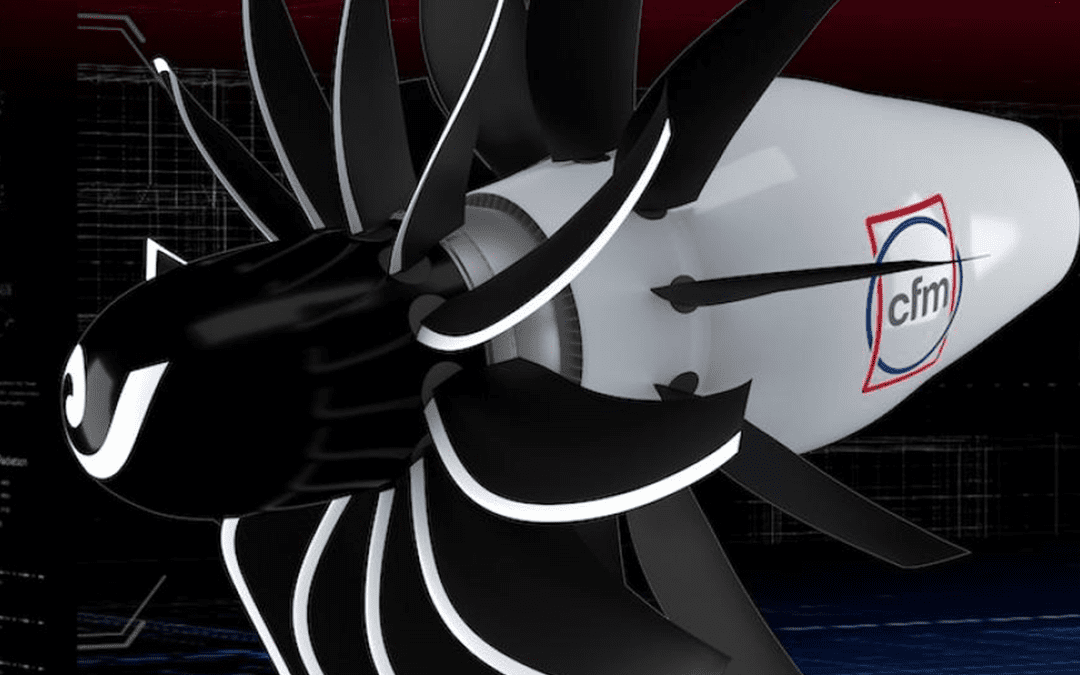GE Aerospace Commits $1 Billion to Its MRO Network to Support Unprecedented Aftermarket Ramp-Up
August 20, 2024 | by Jay Stowe
It’s been a pretty good year for airline travel so far. The International Air Transport Association (IATA) recently reported that, as of May, total global air travel had increased 10.7% year over year. What’s more, IATA estimates that the world will set a new record for the total number of air travelers in 2024 (4.96 billion), and air cargo volume will reach 62 million metric tons. Considering that every two seconds an airliner powered by GE Aerospace or one of its partners takes off somewhere in the world — an installed base of more than 44,000 commercial aircraft engines in all — that’s a lot of planes to keep up in the air.
This is what is sometimes referred to as “a good problem.” To tackle it, GE Aerospace announced in July that it will invest $1 billion over the next five years in its global maintenance, repair, and overhaul (MRO) network, enabling the company to support a higher volume of shop visits for both its widebody and narrowbody fleets while also reducing turnaround times for its customers around the world. All 19 of GE Aerospace’s MRO and component repair sites will apply funds to upgrade equipment and machines, purchase new tooling, expand and improve facility infrastructure, and accelerate repair technology advancement.
Accordingly, a big chunk of the investment will go to expanding capacity at sites that specialize in servicing CFM LEAP engines, to meet the growing demand for shop visits. CFM International, a 50-50 joint company between GE Aerospace and Safran Aircraft Engines, currently powers more than 3,300 commercial aircraft with the CFM LEAP engine, and has another 10,000 LEAP engines ordered on backlog. That translates to thousands more commercial jets coming online over the next decade, all of which will require service.
“Our key role is to provide our customers with a differentiated experience, and to make sure that when an engine is removed from a customer’s wing we perform high quality maintenance and get it back to them as soon as possible,” says Farah Borges, vice president of assembly and test, maintenance, repair, and overhaul at GE Aerospace. “Each one of our overhaul and repair sites is going to receive some level of investment to support their requirements and the technology advancements we need. We’re earmarking significant investment for the expansion of the LEAP network to support the growing LEAP fleet.”
To that end, Borges notes, some facilities that already focus on servicing LEAP engines — for example, the overhaul sites in Malaysia and Brazil — will be growing their capacity through facility expansions, new tooling, improved processes, and advanced technologies. And the XEOS site in Poland, which GE Aerospace runs in partnership with Lufthansa Technik, will be converted from servicing other engine lines to focus on LEAP.

“In addition to that, we’re also looking at our On-Wing Support (OWS) network,” Borges says. “Traditionally, OWS has been focused on meeting customers where they are and performing repairs on-wing or near-wing. Over the past couple of years, we’ve done more quick-turn, off-wing work at these sites. As we look at the next few years, the capability at our OWS sites is going to be a large part of how we support light work scope engines.”
Two examples that illustrate how GE Aerospace is strengthening the capabilities of its OWS network include the recent acquisition of a test facility and the expansion of its Dallas–Fort Worth OWS facility. Both investments are intended to help build capacity and add capability within the company’s OWS network.
In 2024 alone, the company plans to spend $250 million throughout its MRO network, including completion of the construction of the new Services Technology Acceleration Center (STAC) near Cincinnati, Ohio. STAC, which will open later this year, is designed to help speed the introduction of innovative service inspection technologies throughout the MRO network. The technology refined at STAC will help detect emerging engine issues sooner and reduce unscheduled engine downtime. The facility will also be used as a training center for new, advanced service technologies and as a customer education center.
Borges notes that many of the improvements being made throughout the MRO network were born out of the lean management principles employees have put into action. These will continue with the help of FLIGHT DECK, GE Aerospace’s proprietary lean operating model, which was introduced earlier this year.
“Over the past few years, we’ve made progress in our lean and continuous improvement efforts,” says Borges. “FLIGHT DECK drives the right prioritization of safety, quality, delivery, and cost, but it’s also changing the way we work through a connected system. The FLIGHT DECK fundamentals are not siloed concepts; they work in concert to deliver results.”
The key is collaborating on improvements across the network. “We want customers to get a consistent experience irrespective of the shop providing the service,” says Borges. “There’s an old adage that says, ‘If you want to go fast, go alone. If you want to go far, go together.’ That’s exactly what we are doing. The connectivity of the system and the network will drive differentiated outcomes for our customers and shareholders.”
“Someone recently told me, ‘It’s simple, but it’s not easy,’” Borges adds. “That’s what is really interesting about FLIGHT DECK. The concepts are simple. There’s nothing fancy about what we’re trying to do. It’s about problem-solving cross-functionally and being results-oriented. That’s why it works, but it’s not easy.”





